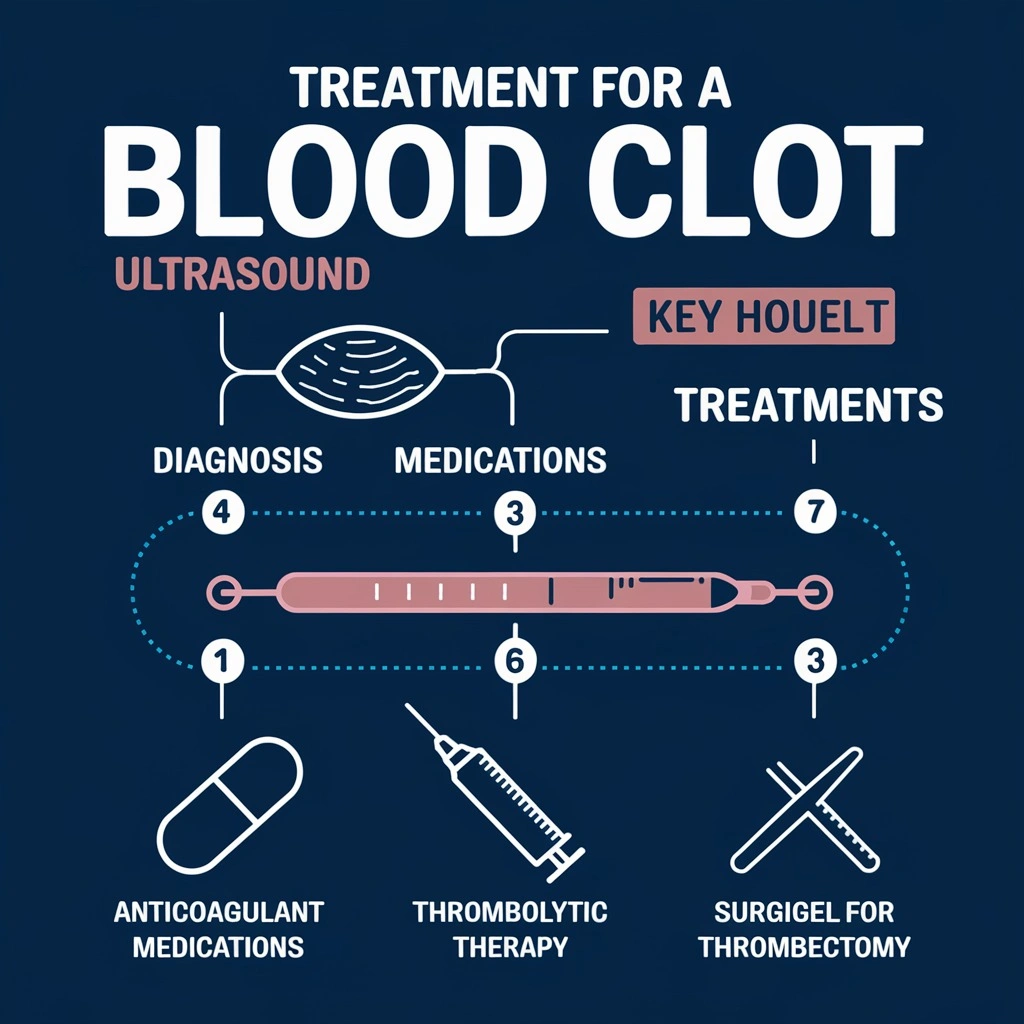Deep Vein Thrombosis – DVT
- Home
- Deep Vein Thrombosis – DVT
Deep Vein Thrombosis (DVT) is a serious condition characterized by the formation of blood clots in the deep veins, typically in the legs. Left untreated, these clots can travel to the lungs, causing life-threatening complications such as pulmonary embolism. Early diagnosis and treatment are crucial to prevent severe outcomes and improve quality of life. This guide provides an in-depth look at DVT, its causes, symptoms, treatment options, and the importance of timely intervention.
Causes of Deep Vein Thrombosis
DVT develops due to a combination of factors that affect blood flow and clotting mechanisms. Common causes include:
- Prolonged Immobility: Long periods of sitting or lying down, such as during air travel or bed rest after surgery, can reduce blood flow and lead to clot formation.
- Injury to Veins: Trauma or surgical procedures can damaage the vein walls, triggering clot development.
- Genetic Factors: Family history of clotting disorders can increase the risk.
- Medical Conditions: Conditions like cancer, obesity, or heart disease can predispose individuals to DVT.
- Hormonal Changes: Pregnancy, hormone replacement therapy, or oral contraceptives can influence blood clotting.
- Lifestyle Factors: Smoking and dehydration can contribute to the risk of clot formation.
Understanding these risk factors can help in identifying individuals at higher risk and implementing preventive measures.

Symptoms of Deep Vein Thrombosis
DVT symptoms may vary depending on the severity of the condition. Common signs include:
- Swelling in one or both legs, especially in the calf or thigh.
- Pain or tenderness in the affected leg, often felt while standing or walking.
- Red or discolored skin in the affected area.
- Warmth in the skin over the clot.
- Visible surface veins that are swollen or engorged.
Some individuals may have DVT without noticeable symptoms, making regular health checkups essential for those at risk.

Benefits of Early Treatment
Timely intervention for DVT offers numerous advantages, including:
- Prevention of Pulmonary Embolism: Early treatment reduces the risk of clots traveling to the lungs.
- Reduced Long-Term Complications: Prevents chronic conditions like post-thrombotic syndrome, characterized by swelling, pain, and skin changes.
- Improved Mobility and Quality of Life: Addresses symptoms promptly, enabling patients to return to normal activities.
- Cost-Effectiveness: Early diagnosis and treatment can avoid costly hospital stays or surgeries resulting from complications.
Latest Treatment Techniques
Modern medical advancements have revolutionized DVT management, ensuring effective treatment and reduced risks. Common techniques include:
- Anticoagulant Medications: These blood thinners, such as heparin or warfarin, prevent clots from growing and reduce the risk of new clot formation.
- Compression Therapy: Compression stockings improve blood flow in the legs, alleviating swelling and discomfort.
- Thrombolytic Therapy: In severe cases, clot-dissolving medications are administered to break down large clots.
- Catheter-Directed Thrombectomy: A minimally invasive procedure using a catheter to remove clots directly.
- Inferior Vena Cava (IVC) Filters: These are implanted in the large vein to catch clots and prevent them from reaching the lungs.
- Lifestyle Changes and Physical Therapy: Encouraging mobility, regular exercise, and healthy habits to improve circulation and reduce recurrence risk.

To explore advanced techniques like Catheter-Directed Thrombectomy, visit our specialized venous interventions page.
Comprehensive Overview of Treatment Options
Treatment for DVT is tailored to each patient’s condition and risk factors. A combination of therapies is often employed to achieve the best outcomes:
- Medical Management: Regular monitoring and adjusting anticoagulant therapy for effective clot prevention.
- Rehabilitation Programs: Physical therapy to restore strength and mobility.
- Long-Term Care: Ongoing use of compression stockings and follow-ups to monitor for recurrence.
Example: Sarah had large varicose veins and chose Venaseal. The procedure was completed in under an hour, with no incisions or visible scars, and she experienced minimal discomfort.
Pros
- No heat or injections
- No incisions required
- Quick recovery
4. Ultrasound-Guided Foam Sclerotherapy
This advanced form of sclerotherapy uses foam instead of liquid agents. Ultrasound guidance ensures accurate delivery to the veins, especially for larger veins.
Example: Emily had both small and large varicose veins, treated with ultrasound-guided foam sclerotherapy. The procedure successfully improved both her symptoms and leg appearance.
Pros
- Effective for larger veins
- Targeted treatment using ultrasound
- Minimally invasive
Conclusion
Venous diseases like varicose veins and chronic venous insufficiency can affect daily life, but modern venous interventions provide effective solutions. Treatments like EVLT, sclerotherapy, and Venaseal are minimally invasive, have quick recovery times, and offer long-lasting results.
If you are experiencing symptoms of venous disease, early treatment is key to preventing complications and improving your overall health. Schedule a consultation with a healthcare provider to discuss the best treatment options for you.
Frequently Asked Questions (FAQs)
Venous diseases are caused by weak or damaged vein valves, leading to blood pooling in the veins.
Treatments include EVLT, sclerotherapy, Venaseal, and ultrasound-guided foam sclerotherapy. The best option depends on the severity and location of the veins.
Most treatments are minimally invasive and cause little discomfort. Local anesthesia is used, and recovery is usually quick.
Most patients can resume daily activities within a few days after treatments like EVLT or sclerotherapy.
Would you like to request an appointment?
You can call on +91-98200 86520 for Appointments or fill the form below
If you’re experiencing symptoms of venous disease, contact us today to schedule a consultation. Our experienced specialists will help you choose the best treatment for your condition.
